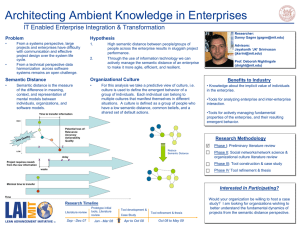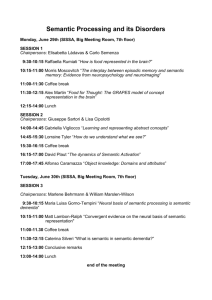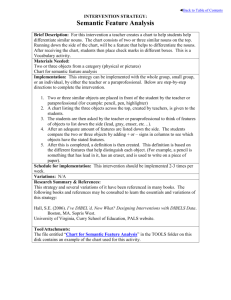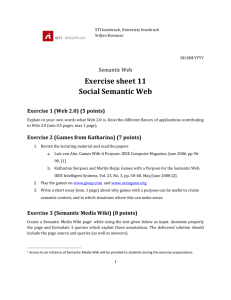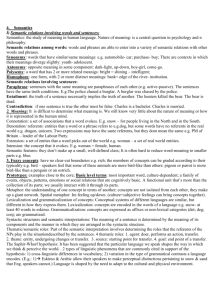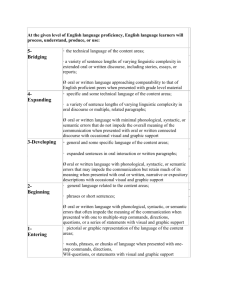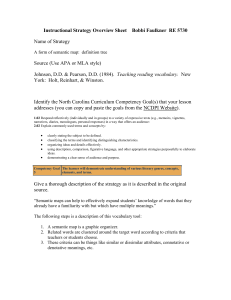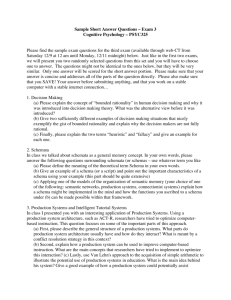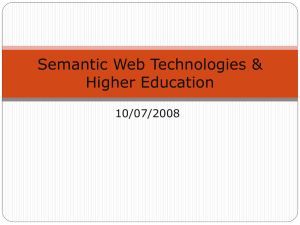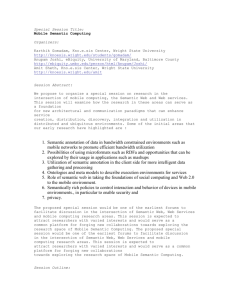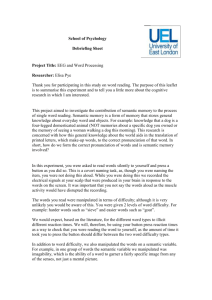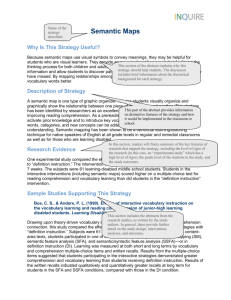Semantic Word Webs
advertisement
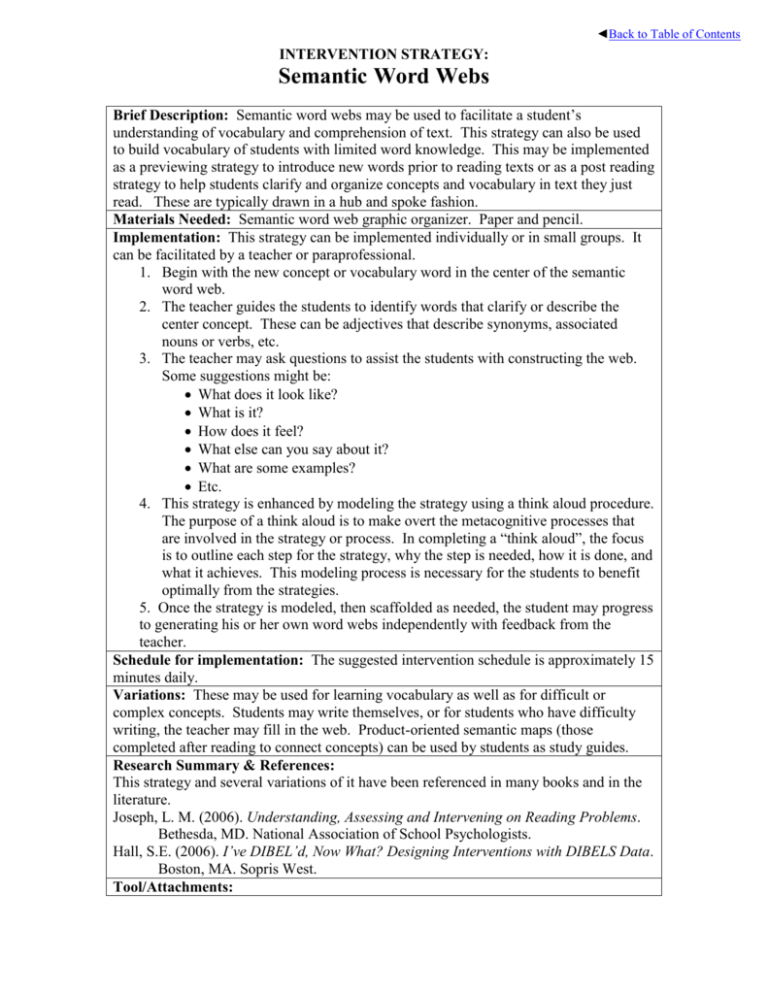
◄Back to Table of Contents INTERVENTION STRATEGY: Semantic Word Webs Brief Description: Semantic word webs may be used to facilitate a student’s understanding of vocabulary and comprehension of text. This strategy can also be used to build vocabulary of students with limited word knowledge. This may be implemented as a previewing strategy to introduce new words prior to reading texts or as a post reading strategy to help students clarify and organize concepts and vocabulary in text they just read. These are typically drawn in a hub and spoke fashion. Materials Needed: Semantic word web graphic organizer. Paper and pencil. Implementation: This strategy can be implemented individually or in small groups. It can be facilitated by a teacher or paraprofessional. 1. Begin with the new concept or vocabulary word in the center of the semantic word web. 2. The teacher guides the students to identify words that clarify or describe the center concept. These can be adjectives that describe synonyms, associated nouns or verbs, etc. 3. The teacher may ask questions to assist the students with constructing the web. Some suggestions might be: What does it look like? What is it? How does it feel? What else can you say about it? What are some examples? Etc. 4. This strategy is enhanced by modeling the strategy using a think aloud procedure. The purpose of a think aloud is to make overt the metacognitive processes that are involved in the strategy or process. In completing a “think aloud”, the focus is to outline each step for the strategy, why the step is needed, how it is done, and what it achieves. This modeling process is necessary for the students to benefit optimally from the strategies. 5. Once the strategy is modeled, then scaffolded as needed, the student may progress to generating his or her own word webs independently with feedback from the teacher. Schedule for implementation: The suggested intervention schedule is approximately 15 minutes daily. Variations: These may be used for learning vocabulary as well as for difficult or complex concepts. Students may write themselves, or for students who have difficulty writing, the teacher may fill in the web. Product-oriented semantic maps (those completed after reading to connect concepts) can be used by students as study guides. Research Summary & References: This strategy and several variations of it have been referenced in many books and in the literature. Joseph, L. M. (2006). Understanding, Assessing and Intervening on Reading Problems. Bethesda, MD. National Association of School Psychologists. Hall, S.E. (2006). I’ve DIBEL’d, Now What? Designing Interventions with DIBELS Data. Boston, MA. Sopris West. Tool/Attachments: The file entitled “Word Web Graphic” in the TOOLS folder on this disk contains reproducible sheets with word web graphics.





